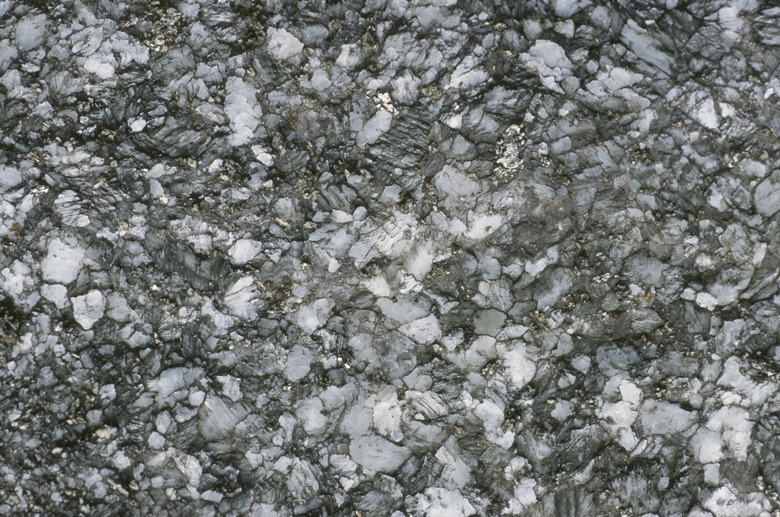Magnetite Vs. Meteorite
Think how amazing it would feel to hold in hand something that has traveled for eons in outer space. Of course, meteorites, or pieces of asteroids or planets that fly through space and land on Earth, sometimes seem indistinguishable common terrestrial minerals like magnetite. This explains why some meteorite hunters might quickly assume they stumbled on a piece of another world when all they really have is just an Earth rock.
Chemical Makeup
Chemical Makeup
Both magnetite and meteorites have high levels of iron, which is one reason they are easily mistaken for each other. Meteorites are heavy due to their high iron content, so they tend to feel heavier than most Earth rocks of the same size. Magnetite is made up of iron oxide, making it opaque and metallic, much like a meteorite could appear; some other meteorites, however, can be brown or gray. Most meteorites contain an iron and nickel alloy, while terrestrial rocks like magnetite most often do not contain nickel.
Appearance
Appearance
Both magnetite and meteorites can be dark gray or black in color, but while magnetite has an isometric crystal form and its crystals are typically octahedrons or dodecahedrons (having 12 sides or faces), meteorites most often do not contain crystals, although some rare forms of meteorites do have crystal formations. You can also test a rock and identify it by the appearance of its streak; magnetite leaves a black streak, whereas meteorites do not leave any streak. You can also identify meteorites based on their surface, which might have depressions called regmaglypts (evident in iron meteorites) or be smooth but rarely perfectly round (stone meteorites).
Magnetism
Magnetism
Another reason why magnetite is mistaken for meteorites is due to its magnetism. Both meteorites and magnetite attract metal, so it is necessary to use another test like a streak test to tell them apart. Very few meteorites will not attract a magnet. A magnetite's magnetism is considered weak, but it is strong enough to attract large nails.
Fusion Crust
Fusion Crust
Meteorites that have recently fallen to the Earth have a "fusion crust," meaning their surface resembles a black ash color. After years of exposure to the Earth's atmosphere, the crust weathers to a rusty brown color. Magnetite remains a glossy black color unless it forms a yellow-brown rust from being washed or kept in a moist area.
Cite This Article
MLA
Batema, Cara. "Magnetite Vs. Meteorite" sciencing.com, https://www.sciencing.com/magnetite-vs-meteorite-5017/. 24 April 2017.
APA
Batema, Cara. (2017, April 24). Magnetite Vs. Meteorite. sciencing.com. Retrieved from https://www.sciencing.com/magnetite-vs-meteorite-5017/
Chicago
Batema, Cara. Magnetite Vs. Meteorite last modified August 30, 2022. https://www.sciencing.com/magnetite-vs-meteorite-5017/
